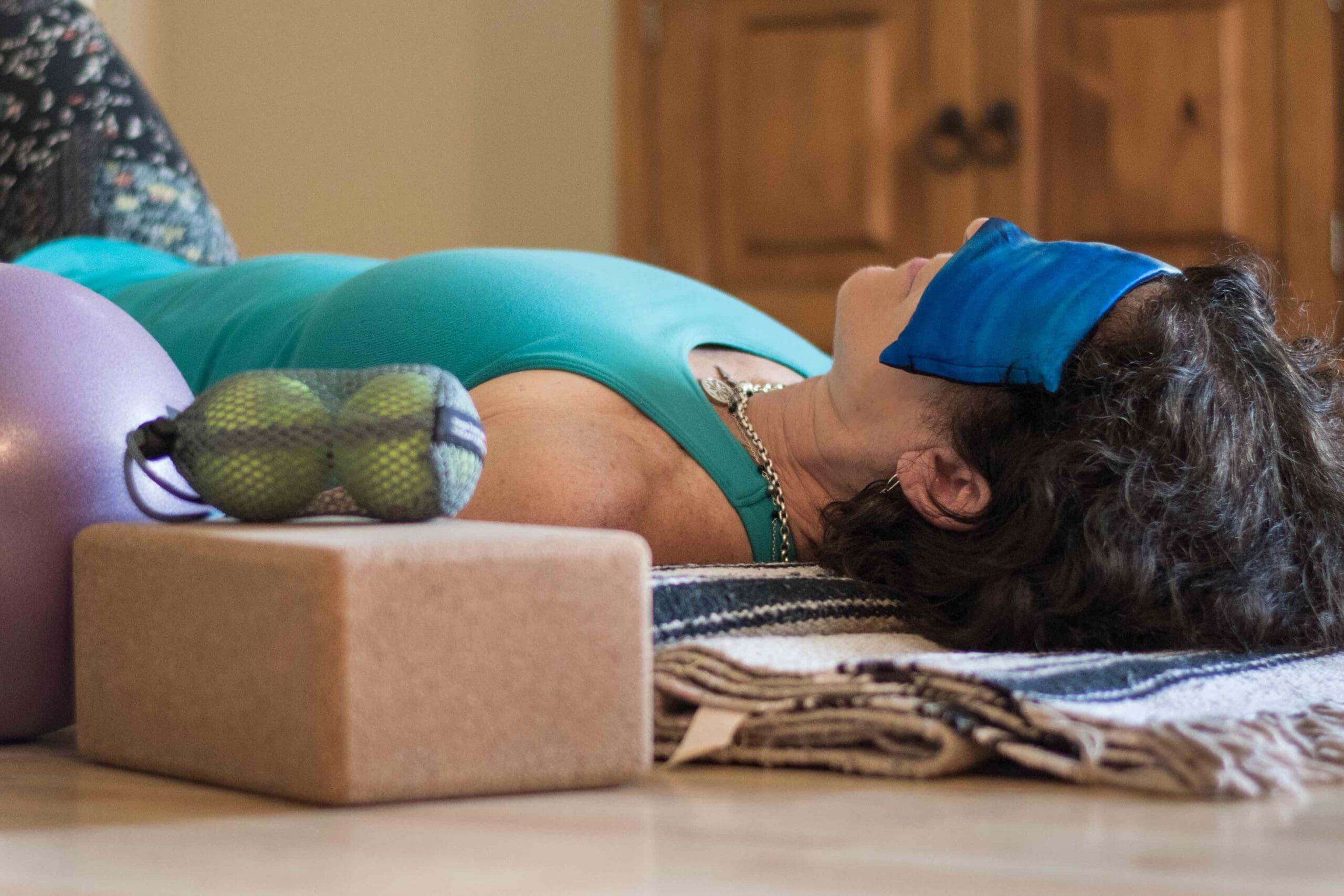
When I contemplate the basic five human senses–sight, sound, smell, taste, and touch–sight stands out as my most coveted sense.
The sense of sight allows us to visually take in all the beauty that is around us. It is also vital when scanning for safety and opportunity in our surroundings.
Sight is most certainly a sense we want to preserve and protect. Fortunately, there are quite a few exercises you can do to help strengthen your sense of sight and reduce eye strain, as you will learn below.
How Does Our Eyesight Work?
The human eye is a sense organ. Along with the central visual system, it makes up the ocular system (see diagram). The eye sees objects because of the presence of light (a portion of electromagnetic radiation that is visible to the human eye) and pressure.
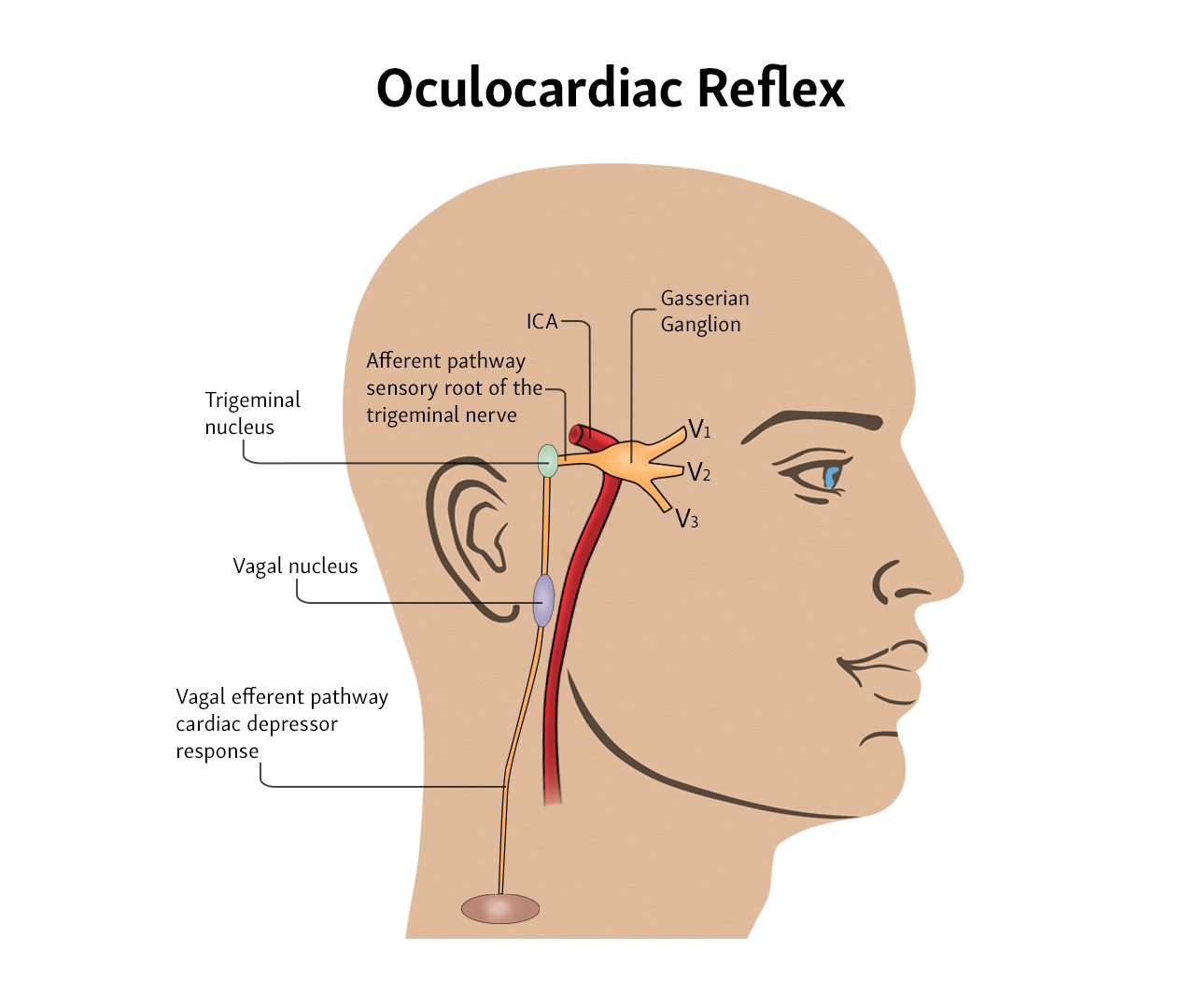
Light starts by reflecting off the object the eye is directed toward. The light rays enter through the front of the eye (the cornea and the aqueous humor). The light then enters the pupil to reach the lens.
The lens focuses the light and it passes through a thick and clear fluid that fills the eyeball (the vitreous humor) then it travels onto the back of the eye (the retina). The retina then translates the light into electrical impulses, sends it to the optic nerve, and it is carried to the brain.
The electrical impulses are then interpreted by the visual cortex so we can interpret what we see. Cool, right? Now check out these wonderful ways to release tension and tune up your eye muscles.
Eye Self Care Techniques For Healthier Eyes
Technique #1: Practice the 20-20-20 Rule
Staring at a computer or smartphone causes us to not blink as much as we should. This can cause eyes to not have enough moisture. Eye strain can also be caused by stress and fatigue.
To help combat some of this eye fatigue, practice the 20-20-20 rule. For every 20 minutes you spend using a computer, tablet, smartphone, etc. look 20 feet away at an object (like a beautiful tree outside your window or your mischievous cat knocking stuff off your coffee table) for 20 seconds.
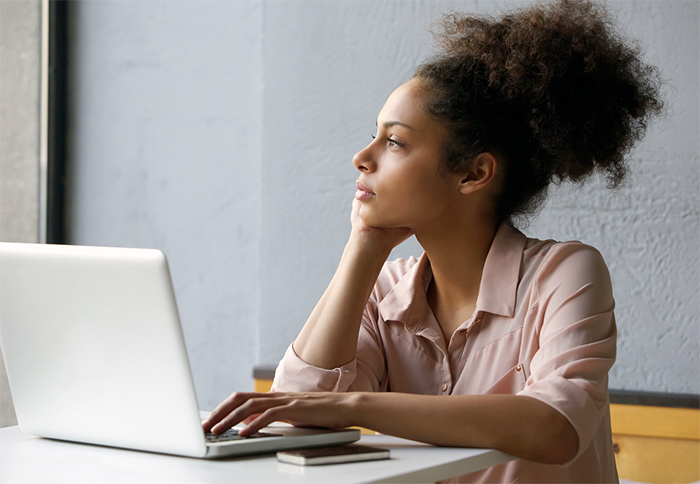
Just relax and observe something that isn’t a screen. Set a timer for 20 minute intervals to help you remember to take these important eye health breaks.
Technique #2: The Suboccipital Self-Massage
This self-massage exercise can help dissolve occipital tenderness associated with skull, neck, and upper back muscle tension and headaches. Including diaphragmatic breaths in this exercise will help to stimulate the vagus nerve. This will activate your parasympathetic nervous system, signaling your body to relax.
With your Roll Model® therapy balls in their tote, place them on top of a yoga block (oriented parallel to the block).
Lie down on your yoga mat and place the therapy balls and block underneath your head. They should be nestled under your occiput (base of your skull), touching your posterior neck muscles.
Close your eyes and slowly nod your head “yes,”, syncing the movement with slow diaphragmatic (belly) breaths (20 reps).

Next, slowly turn your head “no” left and right while syncing the movement with slow diaphragmatic inhales and exhales.

Inhale while turning your head to the left and feel the left therapy ball press more deeply into the left splenius capitis muscle. Slowly exhale while turning your head to the right and feel the right therapy ball work its magic on your right splenius capitis muscle. (pragermetis.com)
Technique #3: Movements to Exercise Your Eyes
Fixing your gaze on a computer, TV, or phone causes a lack of movement and can weaken the muscles that move your eyes. This can also cause poor lubrication on the eyeballs.
The following exercises will help you strengthen the range of motion for your sight. These are great for kids as well.
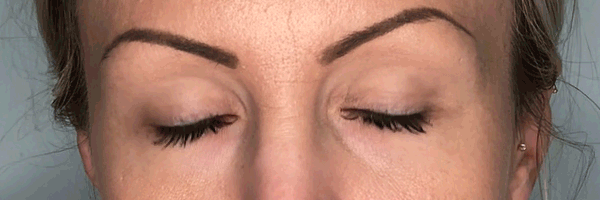

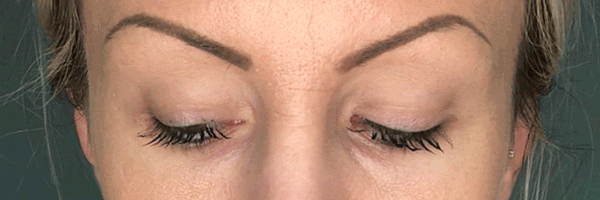
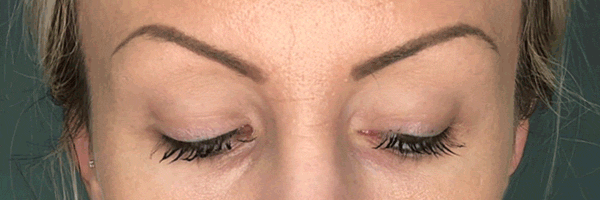
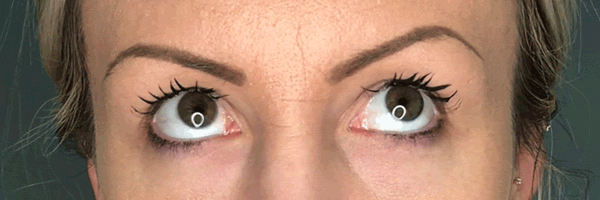
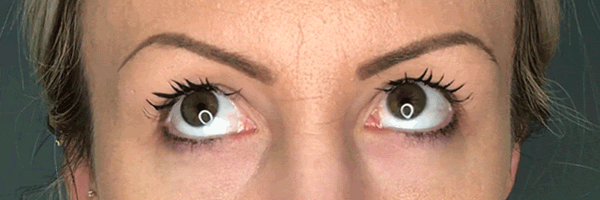



Thank you to Yokibu “Eye Exercises for Children” for the inspiration for the above practices.
Technique #4: Weighted Eye Pillow
Grab a weighted eye pillow and spend 5 minutes (or 20… or an hour) laying down comfortably, with the pillow resting over your eyes.
The gentle pressure from the eye pillow helps to lower heart-rate by activating the oculocardiac reflex.
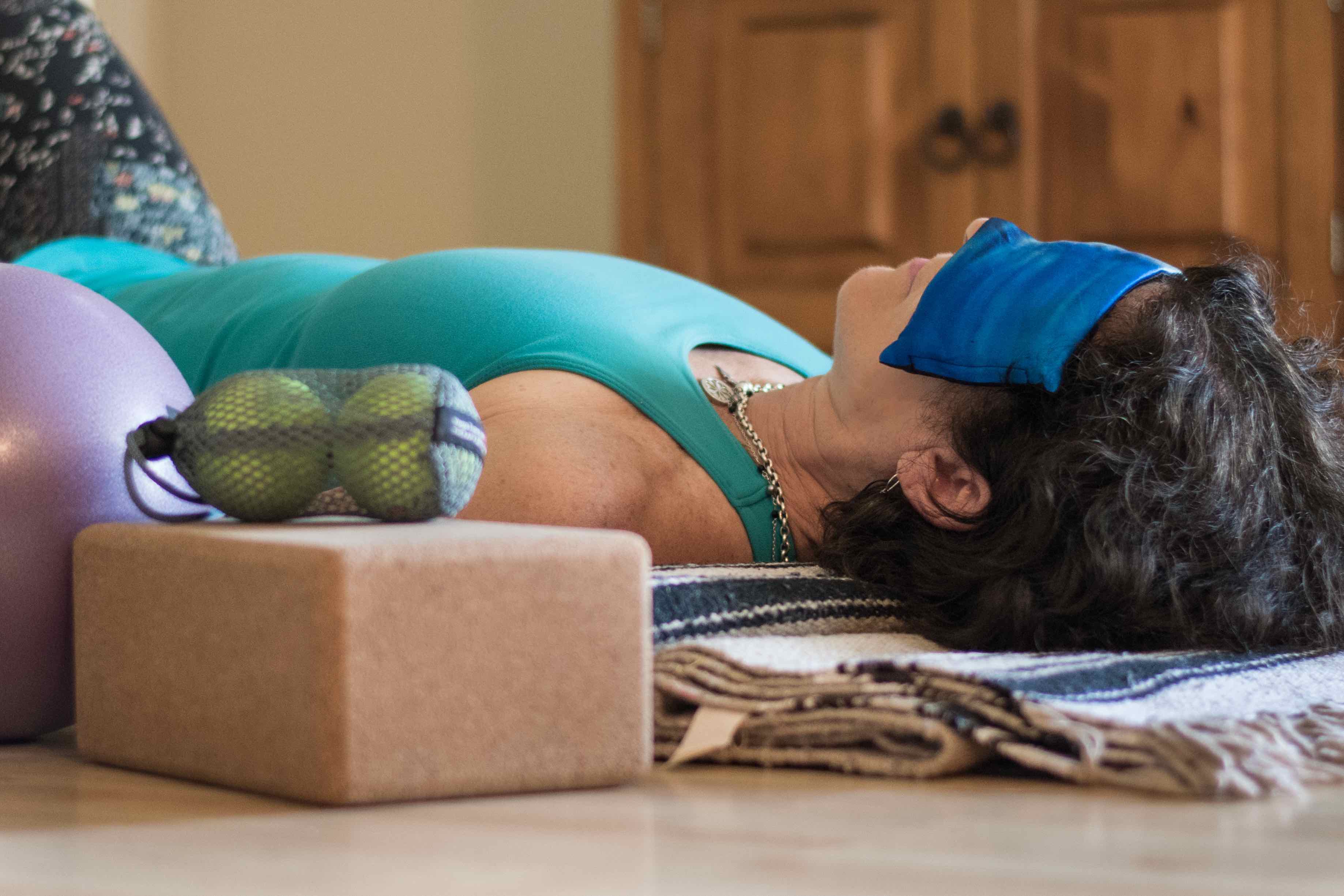
The oculocardiac reflex is regulated by the extraocular muscles within each eye. These contain nerve endings that are responsible for this reflexive action. Activating the oculocardiac reflex also has the added benefit of stimulating the vagus nerve. Both together trigger the parasympathetic nervous system, signaling to your body that it’s okay to rest, relax, regenerate, and digest.
Additional Ways to Preserve Your Vision
Wearing UV Protective Lenses
One of the most important things you can do to preserve your vision is to protect your eyes from ultraviolet rays. Wear UVA and UVB blocking lenses that cover your entire eye area.
Wearing sunglasses that protect your eyes from 99 – 100% of UV rays helps to protect the eyes from macular degeneration, cataracts, and eyelid cancer.
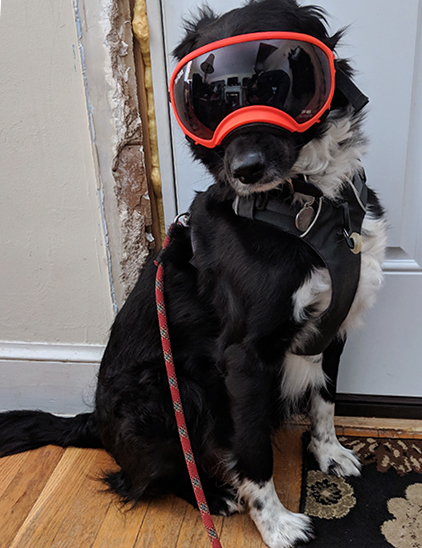
Regular Eye Exams
Eyes are not only the windows to our souls, but they are also often the windows to our health.
Even if you don’t wear corrective lenses, it’s still important to get yearly eye exams. Optometrists and ophthalmologists can spot health issues such as glaucoma and cancer.
Eye doctors are also often the first medical professionals to detect diabetes, high blood pressure, and high cholesterol in patients while examining the minuscule blood vessels surrounding the retina. Unhealthy blood vessels can be the early warning signals for these serious health conditions.
I hope this article helps you to keep your eyes healthy for many years to come so that you can continue to see all the beauty that life has to offer!
For an in-depth online class with Jill Miller focusing on eye health, have a look at this class: EYEBALL: IT’S TIME TO PRIME YOUR EYES.
Shop this post: For neck massage, get Original Yoga Tune UP Therapy Ball Pair (used in the first neck massage technique), the Therapy BALL PLUS, or ALPHA TWIN Set (in the second ball tecknique)
Related Article: Two Minutes to Peace: Fun and Fast-Acting Relaxation Breathing Techniques for Stressful Times
Learn more about our Therapy Ball Products and Programs
Interested in video and blog content targeted to your interests











I’ve worn glasses since I was a child, so this info and exercises to reduce eye strain & strengthen my eye muscles is greatly appreciated! Spending so much time on screens takes a toll on me, and I’m excited to try the palming and focus-shifting techniques to give my eyes some relief.
Thank you for this easy guide for eye health. I loved the idea that the weighted eye pillow makes a gentle pressure that helps to lower heart-rate by activating the oculocardiac reflex. This was completely new to me. I’m going to try these, beginning with the eye pillow rest.
It seems like eye exercises are making a comeback in yoga classes after many years, probably thanks to advancements in neuroscience. For me, incorporating eye relaxation and exercises into my yoga practice brings incredible relief, especially during stressful moments. It’s fascinating how such simple techniques can have such a profound impact. The idea of pairing eye care with yoga is not just practical, but surprisingly effective.
I’ve done little mini eye workouts before in my restorative classes as it helps with vagus nerve stimulation but I love that caveat of it being a counter to staining at screens for long periods of time. I know in this day in age what can all be pretty guilty of that expecaling during and after covid forcing so many interactions online. I’ve definitely had my fair share of headaches due to eye strain.
Great article and reminder how to take care of our eyes and why. I actually use the balls in their tote, and do the exercise #1 with the tote at the base of my skull. It is one of my favorite techniques to release tension and calm down from a day of staring at the computer screen.
This was a great reminder to take care of our eyes. I carry excess tension in my jaw, especially in times of overwhelm and stress. When I was doing the eye exercised I felt that though there were times my face/neck wanted to do the work, I also felt looser in my jaw afterwards. I will definitely come back to these exercises!
I had no idea that the gentle pressure from the eye pillow helps to lower heart-rate by activating the oculocardiac reflex–wild how it connects to the PNS. Also, if the suboccipital self-massage would be a good fit for the beginning of a yoga class when I find many people already lying on their backs and using blocks like pillows to prop their heads up. It might support them in coming into their bodies mindfully.
I’ve had dry eyes for 20 years since my first lasik surgery, but did not realize that I don’t blink as much when looking at a screen 9-5, or that the lack of movement from looking at a screen weakens the eyes and contributes to poor lubrication. I did the eye exercises and they felt like work, which made me realize I haven’t had that kind of range of motion on a daily basis. Thank you for providing these tools I didn’t know I needed!
Thanks for these great eye care techniques. I have never loved rolling my eyeballs around in my sockets – it just feels so icky. But I can and will use my therapy balls for the suboccipital massage – that feels great!
Love this article! I can’t wait to start implementing these eye exercises into my daily routine! I am also going to incorporate the 20-20-20 rule when I’m on the computer for long periods of time! Thank you!
Thanks for this interesting article and reminder to pay attention to our eye muscles like the other muscles in our body if we want them to perform efficiently throughout our life. I like the 20-20-20 rule and forget that practice helps keep the lens flexible – able to both flatten and round so that we can see clear images that are both far away and near. I was interested in learning more about how eye movement increases glandular secretions of the eye. Can you share more about how this works? And I I am curious about the oculocardiac reflex. I did not know anything about it and was interested to learn more so I find this interesting basic primer: https://www.ncbi.nlm.nih.gov/books/NBK499832/. Perhaps others would find this useful too?
I really align with this article, because being an avid practitioner of ‘eye-yoga’ exercises, this has worked wonders for me. I no longer have a corrective-lenses ID card, and the opotometerist is always shocked when he sees and exams my eyes. I always set the intention that my eyes will be healed, and are refreshing themselves through the movement towards 20/20 vision again. I wish more people would know, and understand the value in a few minutes a day even if its just while youre at the restroom, or upon trying to fall asleep. Great before driving, and after, or at work in between computer sessions. Thank you for bringing more awareness into this practice!
The reminder for eye exercises/breaks is great, but you might want to add a bit of clarification about the weighted eye pillow. For those of us with a history or higher risk for retinal issues it is contraindicated to put pressure on the eyes. So the weight of an eye pillow should be VERY VERY light. I have switched to using a silk scarf for an eye pillow in Savasana and it’s lovely.
Super article sur la santé de nos yeux. Merci beaucoup
J”ai une cliente qui a fait une commotion cérébrale et elle me disait que sa rééducation comporte de nombreux exercices au niveaux des yeux. Cela a été une révélation pour moi, car je n’avais jamais réfléchi aux nombreux muscles qui s’y rattachent. Merci pour cet article très pertinent notamment avec la quantité d’écran que nos yeux consomment à chaque jour.
Take aways:
1) the 20-20-20 rule
2) oculocardiac reflex, a new term to me! Thankfully, I have some experience with some of these techniques in the pastd. I have also used a weighted eye pillow, but did not know the science or physiology behind it.
I will continue to apply the exercises and share these with my students (in a classroom!) many of whom are addicted to video games and spend hours on end staring at screens.
I learned the eye exercises from a Yoga teacher more than a decade ago, it was taught as one of Ajna (3rd eye) Chakra practices, so it was interesting to see them featured in this article. I will now add 20-20-20 into my reminder for the day, too. Thanks for this great article!
What an incredible article addressing the eyes! I live with Sjogrens and struggle with eye health, so I appreciate the exercises and information on processing. The 20-20 rule is going in my tool kit along with the suggested exercises. Thanks YTU!
These tips to improve eye health are easy to do and take a minimal amount of time. I am curious to know if there is research on how these techniques could improve eyesight?
This is a very comprehensive article with great suggestions and interesting eye exercises!
This is so interesting and clear. I always take some time in my day for some exercise and rolling… but I really neglect my eyes. Plus I often have dry and tired eyes after my work day in front of a computer. I will try the 20-20-20 rule and the eyes exercises. Thanks again.
This article is very interesting. Thanks for all the exercises! I will teach these movements to my students.
I would have never thought of the eyes as having a range of motion or to exercise them. That’s so interesting. Also love the 20-20-020 rule, so important today with so many more people working from home with longer hours on a computer. BTW your dog is SUPER cute 🙂
1. THE DOGGLES….I love them.
2. Great article, super informative- I love the detail and these are easy exercises to incorporate into a routine. Although both my parents have poor eyesight, mine has been great so far (fingers crossed) and hopefully I can have a more direct influence in keeping them that way by being more mindful and preventative!
Thanks Missy! I didn’t know that looking at a screen causes us to blink less and causes our eye muscles to work less. I love the eye exercises you suggested and the head ball massage. I am going to try to look away from my computer more, and more often!
Thanks for all the exercises! I will make the Technique #3: Movements to Exercise Your Eyes as my morning wake up routine. 🙂
Can’t wait to try these exercises- eyesight changes have been easily the most frustrating aspect of my forties . Not to mention that trying to cope w he muscular changes affecting vision has been a really annoying migraine trigger . Love the ball work too!
Number two is my most favorite! Can immediately feel the muscles of the eye relax. I do this at the studio right before savasana and it’s actually kind of challenging to drive home- I’m so relaxed (and so are my eyes!).
With increased computer time, I’ve definitely noticed a shift in my sight. These are great tips! I’m excited to try them out!
Thank you for all of these tips. I just turned 46 and have noticed in the past few months that it is happening! My eyesight is changing and I catch myself having to move my phone further away to read clearly. The 20-20-20 practice is a wonderful way to reset the eyes and improve near and far perception. Not to mention, the central nervous system will benefit from taking in the sight of something pleasurable. Also, The Suboccipital Self-Massage is awesome. I had never practiced this with the “yes” and “no” head movements. It gives so much more relief!
Great article with some wonderful tips on how to “exercise” your eyes. I tend to get caught up in a project at my computer and time passes without me really being aware of it. I am going to set a timer for every 20 minutes to remind myself to stop and look away 20 feet to help. Thanks for sharing!
I work with clients of all ages who have a very limited range of motion of their eyes. They often believe that they are moving their eyes independent of their heads, even when they are not! Thanks for this great article and the photos of the different eye exercises. I will be doing the exercises myself as well as sharing them with all of my clients!
I had no idea! This is a great blog. This should be read by all ❤️
I enjoyed this post. I heard from many of my seasoned students that the eyesight is one of the first things to go as we age. These exercises are awesome. I stopped and did a few before finishing the blog.
I was very interested in this article because of the fact that I have worn glasses since I was a child and I have had 2 operations, the first 25 years ago with radiated keratotomy in both eyes and the second after my first embarrassment in the right eye, of which only The taste lasted 6 months. After these two operations I could be a candidate for one more, but it is not the most comfortable since the cuts of my cornea affect my vision to be movable, another sequel is that I no longer produce enough tear to lubricate them, but I feel that the drops instead of helping me dry my eyes even more, my best option according to my doctor is to wait for advances in technology, but the truth is that I would not want to expose myself and affect my current vision, which despite everything I can reach 95% using the glasses. In addition, the use of electronic devices increases the probability of having a dry eye by not blinking in front of the screen and a current problem has occurred, even children already have dry eye problems. So I’m going to put into practice the exercises you recommend to exercise the muscles of my eyes and lubricate them, thank you very much!
Although I don’t work behind a computer, every technique felt so helpful and made my eyes feel strong and recovered from starring at my phone and TV screen. Also, I like to share this kind of healthy information to the people I love and who actually work in a computer all day. It’s powerful how simple eye exercises and rest can make you feel so much different! Thanks for sharing 🙂
The eye is the jewel of the body, but if you have a desk job (like me), looking at screens is almost inevitable (there goes the jewel of my body!) This blog is a wonderful reminder of how important it is to protect my sight so I can continue to maintain a healthy vision to see all the beauty that life has to offer. After trying out a few techniques from this blog for a week (i.e. the eye roll/movement exercise in the AM while brushing my teeth, the 20-20-20 eye health breaks with timer at the office, and the weighted eye pillow before bedtime), I feel that my vision and the range of motion of my eyes have improved. My eyes are more relaxed and less red/dry. I also started removing my contact lens the soonest I get home as well and opt for wearing glasses more often while at home. Thank you so much for sharing these useful practices and for reminding me to preserve and protect my sense of sight.
Thank you for reminding me to exercise my eyes! I will teach these movements to my students.
The eye exercises are wonderful. I cannot wait to incorporate them into my daily routine. I have been resisting getting stronger reading glasses and I am sure these will help. I also love the simple reminder of the 20/20/20 rule. We spend way too much time in front of screens and our eyes are showing the wear and tear. My timer will now be set for “eye health break” Thank You for the tips!
Great!
I have been working a lot in my computer and have observe how my vision is more foggy lately and my eyes are not as lubricated as before. I will definitely try this exercises. Also so interesting that working with taking care of our eyes, stimulates the vagus nerve and brings us to a more parasympathetic state.
So interesting! I never really thought much about exercises for eye health and vision. It’s such a helpful reminder to take occasional breaks from our steady fixation on screens (even as I’m typing this – I’m trying to remind myself to take a break from fixating to much on the screen). I also love the therapy ball technique behind the occiput. It really does help relieve tension in the neck and the upper back.
The 20 20 20 rule is new to me and a great suggestion.
Super photo examples included with your piece.
This is such a nice blog, I will incorporate some of these exercises, not just in yoga classes but in other classes I’m holding. This is a topic that is often forgotten, but there are things we can do to maintain a good eyesight. Thanks!
Great post! I have always had horrible vision – contacts, glasses, laser eye surgery – and now my boys have inherited this from me unfortunately. I think it’s important to hear that we can do things to care for and preserve our vision!
Thank you for sharing these eye exercises! I used to do something similar with one of my teachers and it’s interesting to realize how much we fix our gaze for long periods of time and we actually forget to train/retrain our eyes!
These exercises are wonderfully accessible for a wide variety of audiences. I especially like knowing about the oculocardiac reflex. Now I have the perfect justification for more eye pillow time!
this blog i just loooove, we so dont exercise our eyes ; we take our eyesight as we do our breath for granted. As a yoga teacher, i admit that I focus very much on asanas, pranayama but I do leave out eye exercise. this blog has helped remind me to not take my sight from granted and going forward I will share these lovely exercises.
I do the subocciptal self-massage almost every day and use it frequently at the end of my classes. The eye movement exercises are so important. Not only for the health of the eyes and maintaining range of motion, but also the inner ear, and the movement systems are integrated together. Because your visual system provides so much input through everything that you do, continually training it and making sure that it’s functioning well is one of my highest priorities for my private clients, because poor vision often equates to poor posture and poor movement, pain, a lot of other issues.
There is emerging research that is showing very small isolated drills that you do with your visual system can be effective, but in many cases when we make them harder or more challenging, it causes your brain to adapt more quickly. This is definitely something to think about.
What a great post. Even at the young age of 30 I really notice a lot of growing eye issues, especially after my lasik surgery a few years ago. My eyes are much more often dry, red, and incredibly sensitive (for example, I became severely allergic to false lashes). Do other people have similar symptoms after their Lasik surgery?
Really love the eye exercises – very accessible as you can practice them almost anywhere almost at anytime. Even just doing an abbreviated version of the exercises right now made my eyes feel so much better!
Thanks for sharing these exercises for the eyes, I especially enjoy the eye circles and movements from left to right and up and down. I sometimes offer this to students as the begin savasana and they say that it really helps them relax.
As someone who suffers from eye strain and headaches, this was a well appreciated reminder to put the same effort into care for the eyes as we do the rest of the body… funny how this area gets overlooked. I’ve tried suboccipital massage and a weighted pillow before to relax my eyes, and always enjoyed the temporary relief it brought but never thought much about STRENGTHENING these muscles. The exercises were fun, helped relieve pain and will bring more long term effects as the muscles get stronger. Thanks 🙂
I love this information these day my eye easily get tired,
20-20-20 eye exercise and neck massage to get Vegas nerve relax . It should be for everybody want to do for the eyes.
What I feel these day after reading each blog post, I got smarter and smarter like I had read one book.
I recognize that weak eye muscles can be attributed to more issues from blue light which occurs from our screen time and even bright sun light. The muscles of the eyes need attention and the tips are really helpful to reassure we can improves visual performance, help protect and maintain proper eye health, help support vision in low light settings, help reduce eye fatigue and eye strain, may help reduce eye health deterioration common with age.
This is such a great topic that often gets overlooked by many- myself included. I love the 20-20-20 rule! I find that I spend a large amount of time looking at my laptop screen working on schoolwork. I tend to take eye breaks when this happens, but it usually only lasts for a few seconds. That’s such a great idea to set a timer every 20 minutes. Now that the new semester has begun, I imagine I’ll be using this tip a lot. I also love the eye exercises!
Thank you for this article! I was just speaking with a co-worker yesterday about eye exercises. It’s amazing how one’s eyes feel after putting them through their paces! The Roll Model techniques you shared are my favorite way to end my yoga practice, just before savasana.
Oculocardiac reflex? Who even knew about this? Just one more reason to pull out the lavendar eye pillow and indulge in some savasana with the added benefit of eye health. These exercise techniques I found a bit challenging, as my eyes did tire doing them. Just another great article and item to add to my routine for health. Thanks!